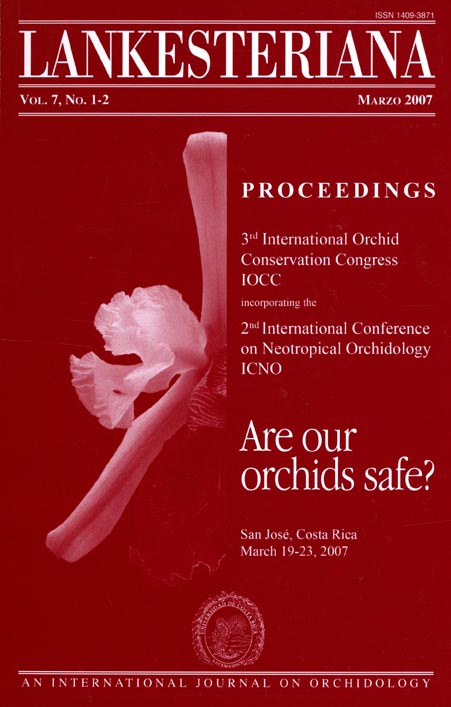Does integrated conservation of terrestrial orchids work?
DOI:
https://doi.org/10.15517/lank.v7i1-2.19507Keywords:
terrestrial orchids, integrated conservation, microsatellites, mycorrhiza, pollinationAbstract
Effective plant conservation involves careful con- sideration and difficult choices when investing limit- ed resources to conservation programs and policies. The conservation practice must integrate the under- standing of existing and future environmental threats, taxonomic distinctiveness, numbers of individuals in populations, reproductive biology, ex situ propagation and the maintenance of evolutionary processes influ- encing population distribution patterns.
Downloads
Downloads
Published
How to Cite
Issue
Section
License
According to the Open Access policy promoted by the University of Costa Rica, all the papers published by Lankesteriana are licensed under the Creative Commons copyright and can be downloaded free of charge. The journal holds copyright and publishing rights under the CC BY-NC-ND 3.0 CR license.
Before the publication of the materials submitted by the author(s) in LANKESTERIANA, the author(s) hereby assign all rights in the article to the Lankester Botanical Garden.





